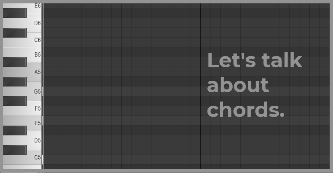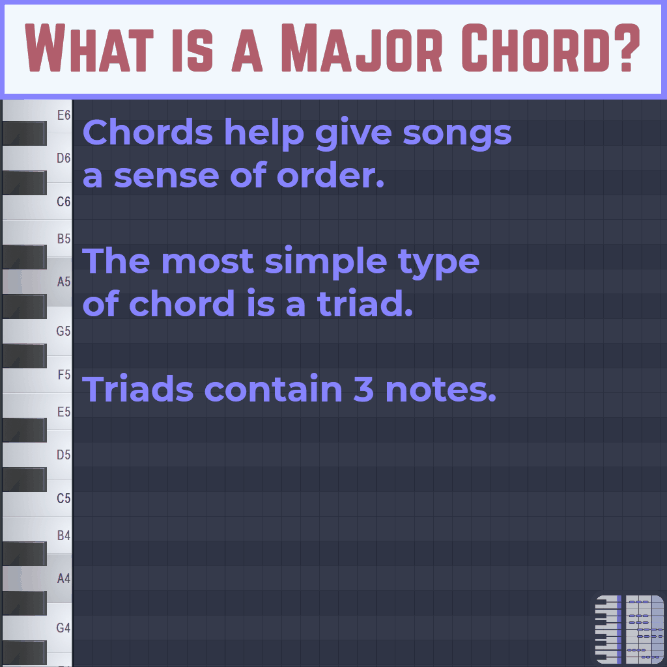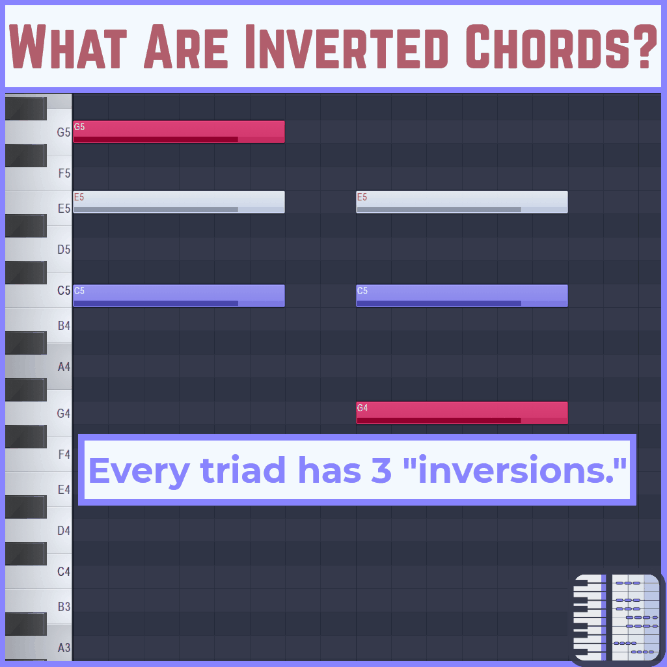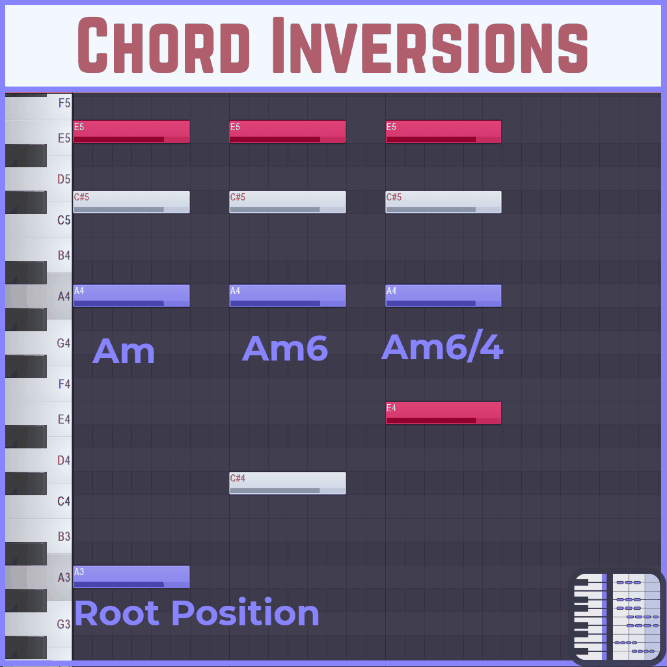Do you sometimes struggle to find the right notes for your melodies?
Stop struggling! There is an easy and methodical way to find the best notes for any melody. This method will provide your song with direction and grant clarity to your songwriting process.
Here’s the deal: you need to know about chords.
Luckily, I’m about to show you how chords help you! You’ll discover how to write a chord. You’ll learn what different types of three note chords exist. And of course, I’ll reveal how chords help you lay down awesome music in FL Studio.
Are you ready for this FL Studio chords tutorial? Let’s dive in!
Why do Chords Determine What Notes Sound Good?
Without chords, music can sound chaotic and unsettling. If you learn how to use chords in FL Studio, then you can tame this chaos, bringing clarity and order to your music.
But why do I say this, and what is a chord?

In short, a chord is a group of (typically three or more) notes played simultaneously. Today, I will tell you about three note chords. We call three note chords triads.
Triads contain three notes. These three notes typically sound good when played together.
Tip: When first writing with triads, use the three notes in the triad as often as possible. At first, the most important notes in your melody should mostly be notes in the triad.
Triads provide a three note skeleton with which you can write your song.
Quite simply, they are the bones of your music. They provide a harmonic structure to your song.
7 Chords That Bring Order and Clarity to Your Music
So what different types of chords exist, and how can they help you?
Let’s look at 7 types of simple triads that subdue discordant music and give direction to your melodies.
1. The Major Chord
The major triad is likely the most common three note chord in music. These three notes sound fantastic together, and most think they have a positive, happy vibe.
In the below graphic, you can see how to make a major chord in FL Studio.

2. The Minor Triad
The minor triad is the second most common three note chord in music.
Once again, these three notes sound incredible together! Many people claim minor harmonies sound sad, but I disagree. I think minor chords simply sound darker and more emotional than major harmonies. What emotion they convey depends on the context of the song.
In the below graphic, you can see how to make a minor chord in FL Studio!

3. Diminished Triads
This infamously sinister chord is a riot.
Imagine this: a chord that sounds so evil that medieval churches restricted its use.
No really. The Catholic church temporarily banned the diminished triad because it contains a diminished fifth, or tritone. And medieval clergymen thought the tritone sounded like “the devil in music.”
This dark chord is notoriously difficult to use. Unlike the major and minor triads, the diminished chord sounds discordant and has a very sick, evil tone to it.
But when used correctly, this chord can make your music uniquely powerful. Click here for a famous example.
Below you can see how to make a diminished triad in the piano roll.

4. Augmented Triads
Have you ever found yourself searching for an interesting transition chord?
The augmented triad may be your answer.
The augmented triad is somewhat uncommon. Like the diminished chord, it can be difficult to use. But it excels as a transition chord. It arguably works best when quickly transitioning between two other chords in a song. It provides a sense of tension that wants to resolve to a more stable chord.
Below, you can see how to make this triad in the piano roll.

5. Suspended Chords (sus2 chords)
Want suspense in your music?
The best way to accomplish that is to use a suspended chord.
Unfortunately, there are many different types of suspended chords. In general, however, suspended are often variations of either major or minor chords. They usually fall into one of two categories: sus2 chords and sus4 chords.
Suspended chords are famous for transforming normal chords into tense, suspenseful atmospheres.
Here’s the kicker: Before you learn how to lay down a suspended chord… You first need to understand the relationship between triads and musical scales.
Triads are frequently built using musical scales. This is a quick and easy way to create a triad from scratch.
Take a look at the .gif below.


6. Suspended Chords (sus4 chords)
There is another important variation of the suspended chord.
Remarkably, it has the exact same function as the sus2 chord. It is equally powerful at helping you lay down quality music.
How can this be?
Instead of lowering the second note of the chord, you raise it instead. This creates the same sense of tension as a sus2 chord. Perhaps unsurprisingly, this new type of chord is called a sus4 chord.
Below you can watch how to make a sus4 chord in FL Studio.
7. Inverted Chords
Above all, the most useful type of chord you need to know about is the inverted chord.
Before you can use the power of inverted chords, you must first know about chord voicing. Chord voicing is a very important tool. Along with chord inversions, understanding this will vastly improve your ability to compose music.
What is chord voicing?
Composers will often arrange the notes of a chord in numerous ways in order to vary its sound. This process is called voicing.
In the below picture you can see this concept illustrated.

An inverted chord is a chord in which the notes are transposed such that the root, originally in the bass, is placed in an upper part.
What does this mean?
Most chords (e.g., major and minor chords) can be inverted. An inverted chord is a variation of another chord. Inverted chords retain many of the properties that the original chord possessed.
It’s simpler to show this process to you. Look at the below picture, where you can see a normal chord transformed into an inverted one.


How to Lay Down Awesome Music With Chords
This is the point where you can put what you’ve learned into practice!
Chords act as a guide, providing direction for your songwriting process. They direct where your melody should travel.
In the picture below, this concept is clearly illustrated.

Take Private Lessons & Master the Rules of Music
Do you want to learn how to produce better music?If you want to get better, then you should take music lessons!
I teach private lessons on music production, mixing, and songwriting in FL Studio. I have 10 years of experience, have worked with artists signed to Monstercat and Spinnin’ Records, and I currently have openings for new students.
I do the first two lessons for free. After that, I charge $15 per lesson.
If you want 2 free FL Studio lessons, then sign up for a time slot now while I’m still accepting new students!
Click Here to Sign Up!Get a Free FL Studio Lesson
